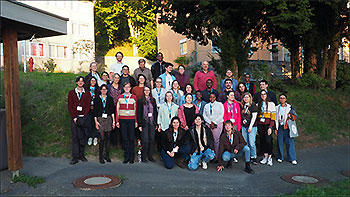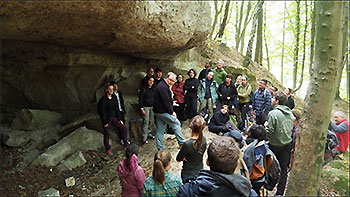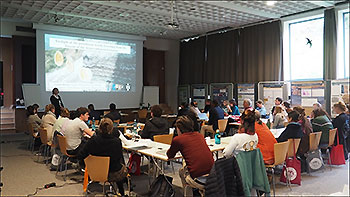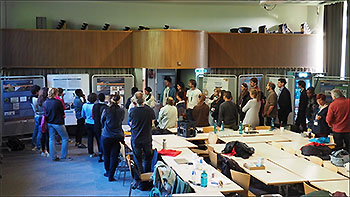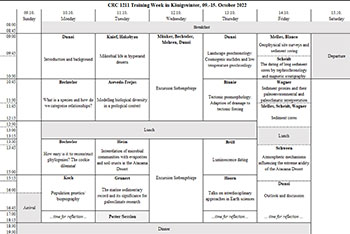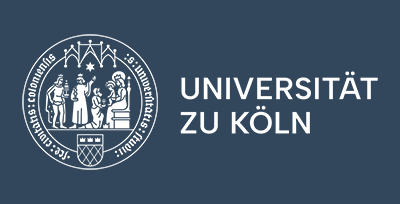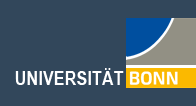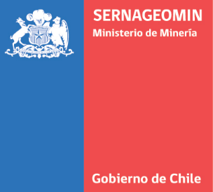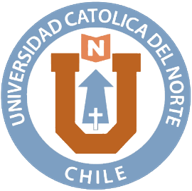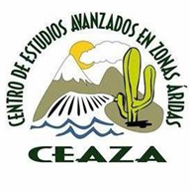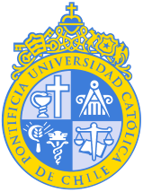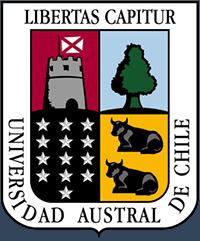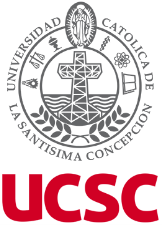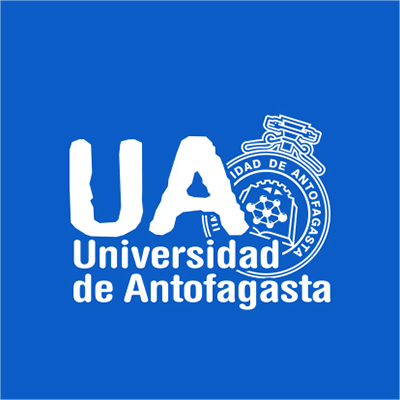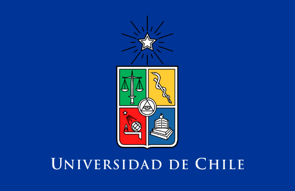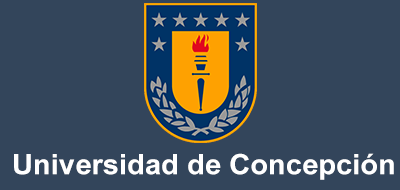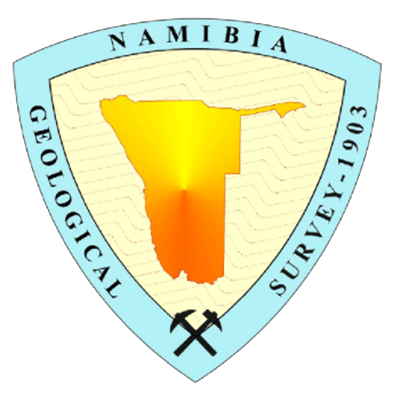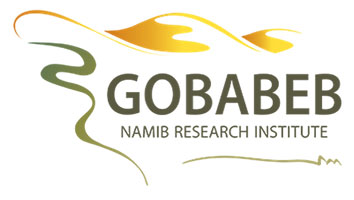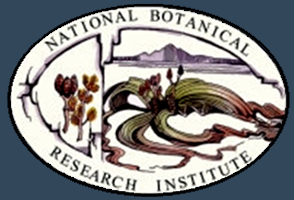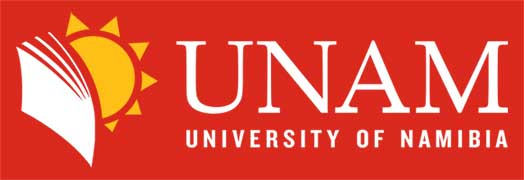an opportunity for knowledge transfer, networking, and international co-operation
The threat of Covid-19 pandemic-related impediments (e.g. health issues, travel restrictions) forced the cancellation of the CRC 1211 summer school, which was originally planned to be conducted in Namibia in October/November 2022. In response to the cancellation, the IRTG (project Z05) provided an alternative opportunity for knowledge transfer, networking, and scientific debate by organising a training week. The event was conducted between 09th and 15th October 2022 in Koenigswinter, Germany. It was convened by Tibor Dunai and Dietmar Quandt, and organised by Joel Mohren. The training week was not only dedicated to represent a platform for interaction among the participants, but it also aimed at providing an introduction into scientific methods and state of the art science related to research conducted within the framework of CRC 1211.
Apart from including members of the CRC, efforts were made to invite students and PhD candidates affiliated to research institutions from the two focus countries of the CRC. As a result, we could welcome participants from the University of Namibia and from the universities Católica del Norte (Antofagasta) and Universidad de la Serena in Chile. The favourable conditions met at the venue promoted social interaction among the participants and may have provided the gametes for future collaboration. A great enrichment to the training week proved to be the presence of participants from outside the CRC, expanding the opportunities of scientific exchange. Apart from presenting their research, the participants who came from Namibia and Chile also shared their first-hand experiences on various research-related topics, which may help CRC members on future fieldworks and facilitate collaboration with our Chilean and Namibian partners.
Relocating the event to Germany implied a better control on disruptive factors at the expense of the general desert ambience present in Namibia. In terms of teaching, however, the conduction of the training week in Germany had positive effects on the availability of teaching capacities. The teaching aimed at including both theoretical and practical teaching blocks in the scientific fields of Bio- and Geosciences. Members of all CRC clusters prepared lectures tailored to the scopes of the training week. The participants could gain insights into the geological background, Earth surface processes and local biota associated to the Siebengebirge Volcanic Field and its vicinity during a one-day excursion led by Carsten Münker, Tibor Dunai, Julia Bechteler, and Joel Mohren. As a further scientific highlight, the conveners invited Prof Carina Hoorn from the University of Amsterdam to provide a glimpse into her research on past and present Geo-Bio feedbacks in the Amazonian region and in the Asian continental interior. In addition, the participants presented their own work on short orals during a poster session.
The training week was a great success as it did not only introduce the participants into the various research fields condensed within the domain of CRC 1211, but it also laid the foundation for future collaboration amongst the participants. Such events are vital to spread the spirit of interdisciplinarity and to establish a network between the early career scientists affiliated to the CRC and beyond, and will ultimately lead to more holistic scientific advances.
The conveners and the organiser thank all participants for showing their enthusiasm and open mindedness during the training week. Furthermore, we thank Esteban Acevedo-Trejos, Julia Bechteler, Steven Binnie, Bárbara Blanco, Dominik Brill, Patrick Grunert, Anna Hakobyan, Christine Heim, Carina Hoorn, Claudia Knief, Marcus Koch, Martin Melles, Carsten Münker, Stephanie Scheidt, Jan Schween, and Bernd Wagner for putting so many efforts in their teaching and presentations.
Author: Joel Mohren
|
Fig.1: Group photo.
Photo: Joel Mohren / Hannah Hartung
|
|
Fig.2: Carsten Münker explains the geology of the Siebengebirge Volcanic Field.
Photo: Joel Mohren
|
|
Fig.3: Martin Melles explains the sedimentary sequence of drill cores from Chile.
Photo: Joel Mohren
|
|
Fig.4: Prof. Carina Hoorn (University of Amsterdam) presents her research.
Photo: Joel Mohren |
|
Fig.5: A participant presents her poster.
Photo: Joel Mohren
|
|
Fig.6: The final schedule of the training week.
|
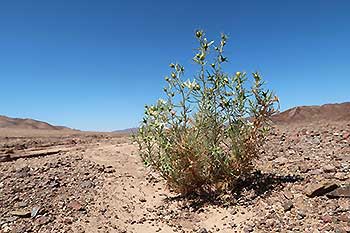
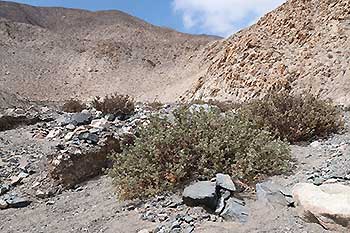



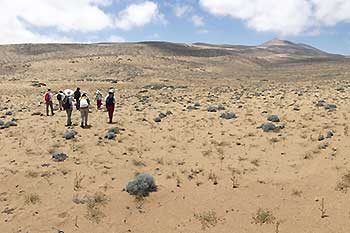
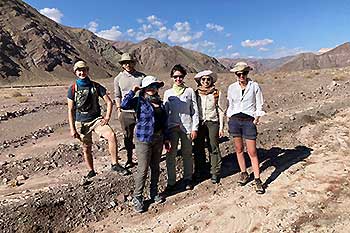
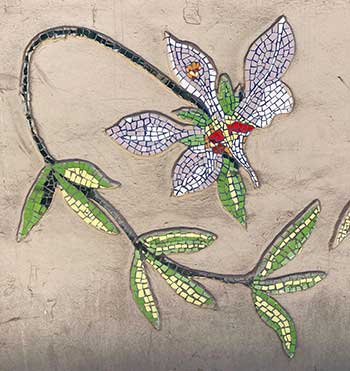
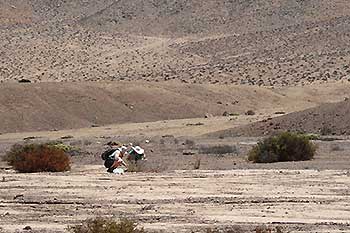
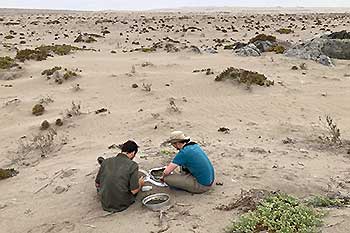
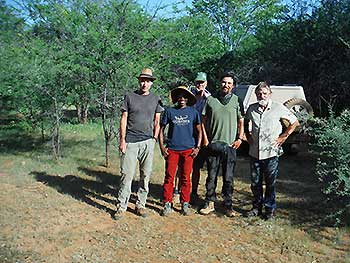
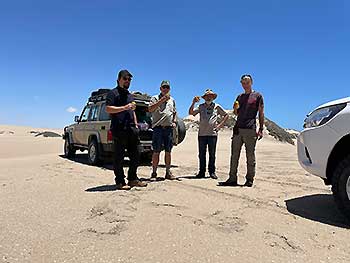
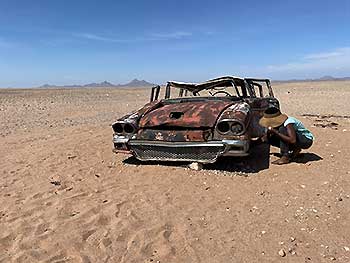
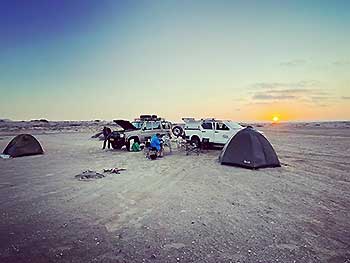
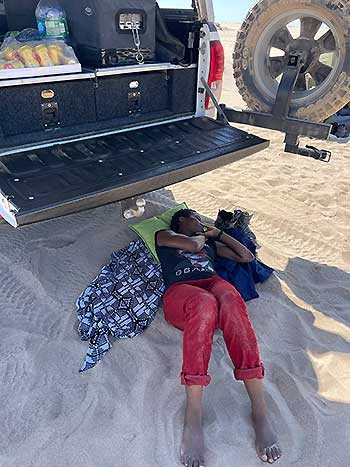
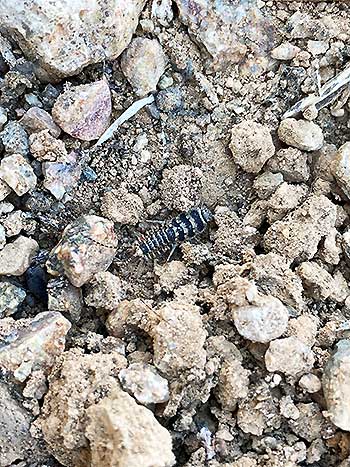
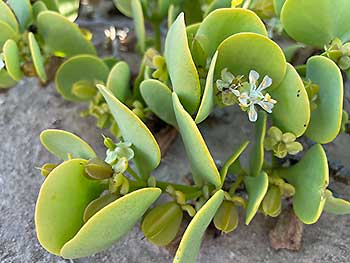
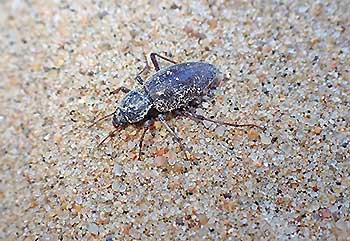
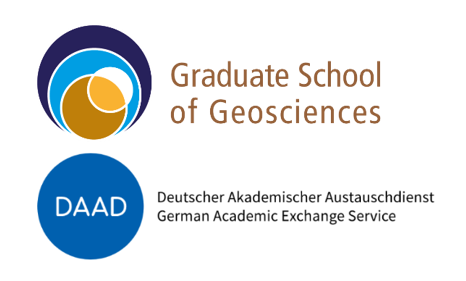 Supported by the
Supported by the 